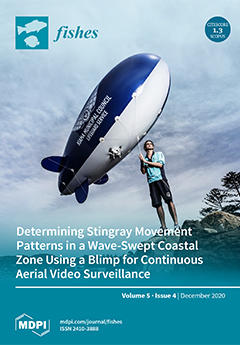The current study aims at determining the optimal usage conditions of rabbit manure in a multispecies fresh water algae production for fish farming. This purpose, the experimental design is made of six treatments in triplicate including one control T
0, T
1, T
2, T
3, T
4, T
5 corresponding respectively to 0, 300, 600, 900, 1200, 1500 g/m
3 of dry rabbit manure put into buckets containing 40 L of demineralized water and then fertilized. The initial average seeding density is made of 4 × 10
3 ± 2.5 × 10
2 cells/L of Chlorophyceae, 1.5 × 10
3 ± 1 × 10
2 cells/L of Coscinodiscophyceae, 3 × 10
3 ± 1.2 × 10
2 cells/L of Conjugatophyceae, 2.8 × 10
3 ± 1.5 × 10
2 cells/L of Bascillariophyceae, and 2.5 × 10
3 ± 1.4 × 10
2 cells/L of Euglenophyceae. During the experiments, the effects of these treatments on abiotic and biotic parameters (chlorophyll-a concentration, phytoplankton density and algal density) of different production media were monitored. Results show that average density of different phytoplankton classes is higher in treatment T
5 (7.91 × 10
8 ± 6.78 × 10
7 cells/L) followed by T
4 (5.56 × 10
8 ± 4.27 × 10
7 cells/L), T
2 (3.87 × 10
8 ± 3.10 × 10
8 cells/L), T
3 (3.79 × 10
8 ± 3.18 × 10
8 cells/L, with high significant difference (F
(4,84) = 5, 35,
p < 0.00). Chl-a concentration varied from 0.07 ± 0.05 mg/L (T
0) to 14.47 ± 12.50 mg/L (T
5) with high significant differences observed among treatments (F
(5,83) = 3,09,
p = 0,01). In addition, fourteen (14) species belonging to eight (8) families, five (5) classes and three (3) phyla were identified in our different production media. During the culture, Chlorophyceae class was the most represented in all treatments with 5 species (36% of the specific diversity) while Euglenophyceae class (7%) was the least represented with only one (01) species. According to these results, treatments T
2 (600 g/m
3), T
3 (900 g/m
3) and T
4 (1200 g/m
3) of dry rabbit manure are those worthy to be recommended as an alternative for a low cost massive production of multispecies freshwater algae that can be easily used by freshwater zooplankton and macroinvertebrates. Indeed, despite the best performances that it shows, treatment T
5, presents important eutrophication’s risks.
Full article





